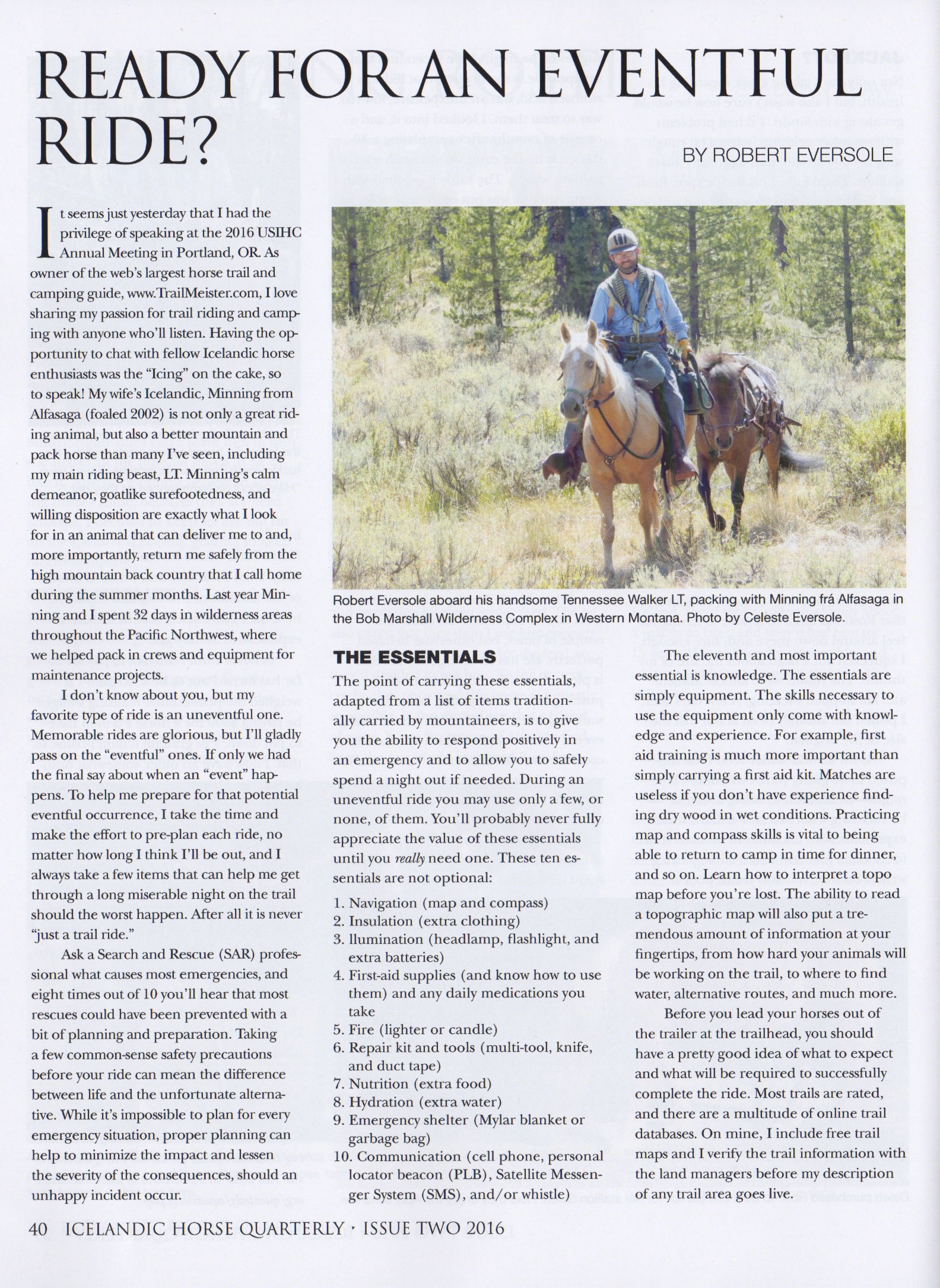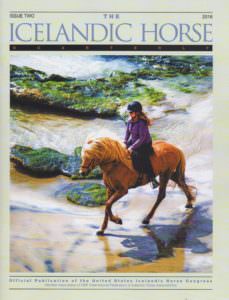
Ready for an “Eventful” Ride?
By Robert Eversole
As published in Issue Two – 2016 of The The Icelandic Horse
It seems that it was just yesterday that I had the privilege of speaking at the USIHC Annual Meeting in Portland Oregon. I love sharing my passion for trail riding and camping with anyone who’ll listen. Having the opportunity to chat with fellow Icelandic enthusiasts was the “Icing” on the cake so to speak!
A moment of introduction is in order. I’m Robert Eversole and besides owning the web’s largest horse trail and camping guide, www.trailmeister.com, I have the privilege of sharing my knowledge of trail riding and equine camping with horse groups around the nation as a clinician, lecturer, and regular columnist in equine publications. I’m also a registered instructor with PATH Intl. and volunteer at Free Rein Therapeutic Riding in Spokane, WA where I teach equitation to individuals with special needs. My riders inspire me. Yes, I have the best job(s) in the world.
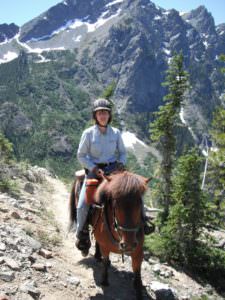 Of course, I wouldn’t be trail riding without horses. Let me first admit that my wife’s Icelandic, Minning fra Alfasaga (foaled 2002) is not only a great riding animal but also arguably a better mountain and pack horse than many I’ve seen, including my main riding beast, LT. Minning’s calm demeanor, goat like surefootedness, and willing disposition are exactly what I look for in an animal that can deliver me to and, more importantly, return me safely from the high mountain back country that I call home during the summer months. Last year Minning and I spent 32 days in wilderness areas throughout the Pacific Northwest where we helped pack in crews and equipment for maintenance projects.
Of course, I wouldn’t be trail riding without horses. Let me first admit that my wife’s Icelandic, Minning fra Alfasaga (foaled 2002) is not only a great riding animal but also arguably a better mountain and pack horse than many I’ve seen, including my main riding beast, LT. Minning’s calm demeanor, goat like surefootedness, and willing disposition are exactly what I look for in an animal that can deliver me to and, more importantly, return me safely from the high mountain back country that I call home during the summer months. Last year Minning and I spent 32 days in wilderness areas throughout the Pacific Northwest where we helped pack in crews and equipment for maintenance projects.
I don’t know about you but my favorite type of ride is an uneventful one. Memorable rides are glorious but I’ll gladly pass on the “eventful” ones. If only we had the final say in when an event happens. To help me prepare for that potential eventful occurrence I take the time and make the effort to pre-plan each ride no matter how long I think I’ll be out, and I always take a few items that can help me get through a long miserable night on the trail should the worst happen. After all it is never “just a trail ride”.
Ask a Search and Rescue professional what causes most emergencies and eight times out of ten you’ll hear that most rescues could have been prevented with a bit of pre-planning and preparation.
Taking a few common sense safety precautions before your ride can mean the difference between life and the unfortunate alternative. While it’s impossible to plan for every emergency situation, proper planning can help to minimize the impact and lessen the severity of the consequences should an unhappy incident occur.
The Essentials are Not Optional
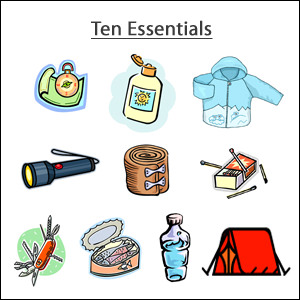 Adapted from a list of items traditionally carried by mountaineers the point of carrying these essentials is to give you the ability to respond positively in an emergency and to allow you to safely spend a night out if needed. During an uneventful ride you may use only a few, or none, of them. You’ll probably never fully appreciate the value of these essentials until you really need one of them.
Adapted from a list of items traditionally carried by mountaineers the point of carrying these essentials is to give you the ability to respond positively in an emergency and to allow you to safely spend a night out if needed. During an uneventful ride you may use only a few, or none, of them. You’ll probably never fully appreciate the value of these essentials until you really need one of them.
The Ten Essentials
- Navigation (Map & compass)
- Insulation (Extra clothing)
- Illumination (Headlamp / flashlight / extra batteries)
- First-aid supplies (Know how to use these tools)
- Fire (Lighter/candle)
- Repair kit and tools (Multi tool / knife / duct tape)
- Nutrition (Extra food)
- Hydration (Extra water)
- Emergency shelter (Mylar blanket / garbage bag)
- Communication (cell phone / PLB / SMS / whistle)
The 11th and Most Important Essential
 Knowledge & Common Sense – The essentials are simply equipment. The skills necessary to use the equipment to your advantage only come with knowledge and experience. For example, first aid training is much more important than simply carrying a first aid kit. Matches are useless if you don’t have experience finding dry wood in wet conditions. Practicing map and compass skills is vital to being able to return to camp in time for dinner…and so on.
Knowledge & Common Sense – The essentials are simply equipment. The skills necessary to use the equipment to your advantage only come with knowledge and experience. For example, first aid training is much more important than simply carrying a first aid kit. Matches are useless if you don’t have experience finding dry wood in wet conditions. Practicing map and compass skills is vital to being able to return to camp in time for dinner…and so on.
Pre Ride Planning
Before you lead your animals out of the trailer at the trailhead you should have a pretty good idea of what to expect and what will be required to successfully complete the ride. Most trails are rated and there are a multitude of online trail databases. The ability to read a topographic map will put a tremendous amount of information at your finger tips; from how hard your animals will be working on the trail to where to find water, alternative routes, and much more. Learn how to interpret a topo map before you’re lost. www.trailmeister.com has free trail maps and verifies trail info with the land managers before any trail area goes live.
If Lost, Stay Calm and Stay Put
Getting lost is easy to do. A bit of fog, an elk path you thought was another trail, an engaging conversation – all can lead you astray. When (Yes, it happens to everyone) you become lost don’t panic. Instead remember the acronym STOP (Stop, Think, Observe, and Plan.) These four simple steps will help you stay on track.
- Stop – If you feel that you’ve gone off course, just stop. It’s very tempting to “keep going just a little bit further.” Don’t fall victim to the temptation. If you do, you stand a good chance of becoming even more disoriented.
- Think – Put the panic aside. Stay calm and approach the situation in a rational manner. Think about what made you realize that you were lost – a trail that vanished, a landmark that wasn’t were it should be. Stay put while you consider the situation – moving will make things worse.
- Observe – Open your eyes and analyze your surroundings. Think about what landmarks might help you orient yourself. Compare those observations to your map to further help pinpoint your location. Think about the weather, what time it is, and what supplies you have on hand. Use all of these factors to develop an action plan.
- Plan – Think through potential next steps and then decide on a plan. If you feel confident that you can get back on your trail, do so. If you do not feel that you can safely make it back, then staying put and waiting for help is a very good option. If help is on the way continued movement will only make things worse.
Calling for Help
 When in need call for help. Don’t be shy, macho, or any other flavor of wrong. Having a means to call for help is a very important issue to consider. Here in 2016 we have a number of tools available to us that weren’t in existence only a decade ago. These high tech tools can add a reassuring measure of safety to many situations.
When in need call for help. Don’t be shy, macho, or any other flavor of wrong. Having a means to call for help is a very important issue to consider. Here in 2016 we have a number of tools available to us that weren’t in existence only a decade ago. These high tech tools can add a reassuring measure of safety to many situations.
Tech to Consider –
- Cell Phones – 911 calls are routed to the proper authorities but if you have no cellular reception they’re not much good. Cell signals may be reliable in the front country, although not always. Check the provider’s coverage map.
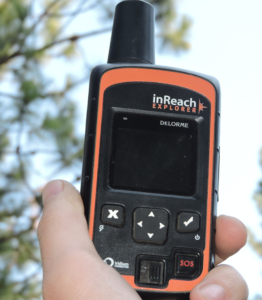 Personal Locator Beacon (PLB) – Emergency use only, no messaging. No ongoing subscription fees. Strongest alert signal of all devices.
Personal Locator Beacon (PLB) – Emergency use only, no messaging. No ongoing subscription fees. Strongest alert signal of all devices.- Satellite Messenger Systems (SMS) – The sweet spot for outdoor folk. Can be an emergency beacon if needed but can also send non emergency updates which equal peace of mind for loved ones at home. The Delorme InReach can send AND receive messages which is very handy, especially if you lose your truck keys!
Help SAR Help You
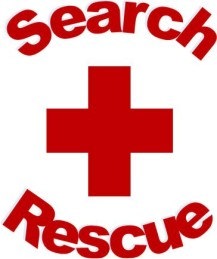 A detailed itinerary, or emergency plan, will help Search and Rescue personnel help you. Creating and leaving a detailed trip plan with a reliable, responsible, and trustworthy person is a good idea. Make sure that they know your route, start date and time, and when you’ll return. If you don’t get back as expected they should have detailed instructions on who to contact – for example the ranger station near the trailhead. If your plan changes let your contact person know. One of the first places Search and Rescue teams will search is the vehicle you left at the trailhead. It’s a good idea to leave an extra copy of your plan in your vehicle so search and rescue teams know exactly where they should be looking and who they are looking for.
A detailed itinerary, or emergency plan, will help Search and Rescue personnel help you. Creating and leaving a detailed trip plan with a reliable, responsible, and trustworthy person is a good idea. Make sure that they know your route, start date and time, and when you’ll return. If you don’t get back as expected they should have detailed instructions on who to contact – for example the ranger station near the trailhead. If your plan changes let your contact person know. One of the first places Search and Rescue teams will search is the vehicle you left at the trailhead. It’s a good idea to leave an extra copy of your plan in your vehicle so search and rescue teams know exactly where they should be looking and who they are looking for.
At a minimum your Trip Plan document should include the following information:
Panic time – If you have not heard from me by (time) _______ on (day) _______ of (month) _______, call 911 and report me as overdue.
Information about yourself and your riding partner(s)
- Name
- Age
- Medical issues
- Level of outdoors experience
Information about your trip
- Trailhead name and county
- Land manager contact information
- Planned trails and route
- Camping locations and sites
- Backup plan
- Time of departure
- Expected time of return
Information about your animals and gear
- Livestock information, color, gender, if shod
- Vehicle make, model, color and license plate
- Trailer make, model, color and license plate
- Emergency equipment carried
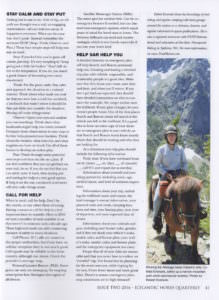 I hope that all of your rides are memorable and that you never have to endure an “eventful” trip. I’ve found that by planning for the worst outcome, while hoping for the best, I have fewer issues and more great rides. There’s a reason contingency planning consultants are in high demand!
I hope that all of your rides are memorable and that you never have to endure an “eventful” trip. I’ve found that by planning for the worst outcome, while hoping for the best, I have fewer issues and more great rides. There’s a reason contingency planning consultants are in high demand!
As always enjoy the trails. For the nation’s largest database of great places to ride and camp with your Icelandics please visit www.TrailMeister.com .


